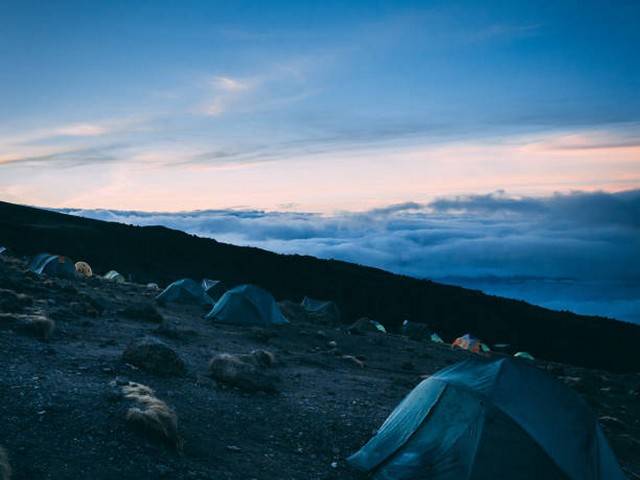Climbing Kilimanjaro Via Lemosho Route: A Journey of Magnitude and Memory
Introduction: Why Lemosho?
Mount Kilimanjaro, the roof of Africa, stands as a beacon that calls to adventurers from all corners of the globe. Climbing Kilimanjaro is a feat that promises not only breathtaking views but also an intimate encounter with your own limits and strengths. Among the various routes that lace up the sides of this majestic mountain, the Lemosho Route is acclaimed for its beauty, remoteness, and the optimal acclimatization it offers. The Lemosho Route is your picturesque pathway through untamed wilderness, leading you to the zenith of Africa.
Embarking on this journey with Kilimanjaro Centre for Trekking and Ecotourism (KCTE) ensures that you are not just a climber, but a cherished guest, guided by experts who are as passionate about your experience as they are about preserving the natural beauty of Kilimanjaro.
The Call of Lemosho: An Overview
The Path Less Travelled
Originating from the western side of Mount Kilimanjaro, the Lemosho Route offers a more secluded ascent, starting from the lush rainforests brimming with wildlife, ascending to the striking Shira Plateau, and merging with the Machame Route to unfold some of the most striking vistas imaginable. Over the course of 7 to 8 days, climbers traverse a diverse tapestry of ecosystems, each a new realm to discover.
Why Choose Lemosho?
- Scenic Splendor: It’s argued to be the most picturesque route up Kilimanjaro.
- Improved Acclimatization: The longer duration aids in acclimatization, reducing the risk of altitude sickness.
- Higher Success Rates: The gradual ascent increases the likelihood of a successful summit.
- Diverse Wildlife: The initial days on the trek are rich in wildlife encounters, making it a nature lover’s delight.
A Step-by-Step Adventure
Beginning the Ascent: Days 1-3
Your journey begins at Londorossi Gate, located on the western side of Kilimanjaro, after a thrilling ride through local villages and coffee plantations. The first leg of the trek moves through a dense rainforest, where the air is thick with the promise of adventure, and the chance to see monkeys swinging through the canopy is high.
As you emerge from the lush forests, the landscape opens to the vast Shira Plateau. The view here stretches wide, offering the first real glimpse of the task ahead – the towering Uhuru Peak.
Merging Routes and Rising Altitudes: Days 4-6
By day four, the Lemosho Route converges with the Machame Route, introducing more climbers into the fold. The camaraderie among climbers adds a rich layer to the experience. The trek continues across barren landscapes into the alpine desert, where the Barranco Wall presents a thrilling challenge. Climbing the Barranco Wall is a test of endurance and offers a profoundly rewarding view.
Summit Night: The Final Push
The summit night is an arduous trek beginning at midnight. Climbers wind their way up steep switchbacks in the pitch-black night, a thread of headlamps slowly making their way to the top. Reaching Stella Point at dawn offers a moment of indescribable emotion, with the final push to Uhuru Peak within touching grasp. Standing atop Uhuru Peak, the highest point in Africa, the world seems to unfold below you—a 360-degree panorama of cloud, ice, and sky.
Preparing for Your Climb
Climbing Kilimanjaro is no impulse adventure. Adequate preparation is key to a successful summit.
- Physical Preparation: Start training at least 6 months in advance, focusing on cardiovascular fitness, strength training, and hiking.
- Mental Preparation: Mental endurance is as crucial as physical strength. Prepare yourself to face various physical and mental challenges.
- Packing Essentials: Proper gear is critical. Thermal layers, waterproof clothing, good hiking boots, a sleeping bag suitable for extreme cold, and a comfortable backpack are must-haves.
Why Climb with KCTE?
At Kilimanjaro Centre for Trekking and Ecotourism (KCTE), we believe that climbing Kilimanjaro is a profound journey that goes beyond physical boundaries. It’s about personal transformation through challenge and communion with nature. Our expert guides, comprehensive climb support, and commitment to safety ensure that your journey up Kilimanjaro via the Lemosho Route is memorable, safe, and inspiring.
FAQ: Climbing Kilimanjaro Via Lemosho Route
Q1: What is the best time to climb Kilimanjaro via the Lemosho Route?
- The best times are during the dry seasons from June to October and from December to March.
Q2: How difficult is the Lemosho Route?
- It is considered moderate to challenging. While physically demanding, the longer duration and gradual ascent help with acclimatization.
Q3: What are the key attractions of the Lemosho Route?
- Key attractions include the diverse ecosystems, high success rates, stunning views from the Shira Plateau, and a thrilling climb up the Barranco Wall.
Conclusion: Your Next Great Adventure Awaits!
Climbing Kilimanjaro via the Lemosho Route with KCTE is not just about conquering a mountain; it’s about conquering oneself. With every step, the spirit of Kilimanjaro speaks, through whispering winds and shifting skies, through the solidity of earth underfoot, and the fire of ambition within.
Ready to answer the call of adventure? Book your climb with Kilimanjaro Centre for Trekking and Ecotourism (KCTE) today and start your journey towards the clouds!
Embark on this life-changing experience and let us guide you to the top of Africa, where dreams meet reality at the peak.




